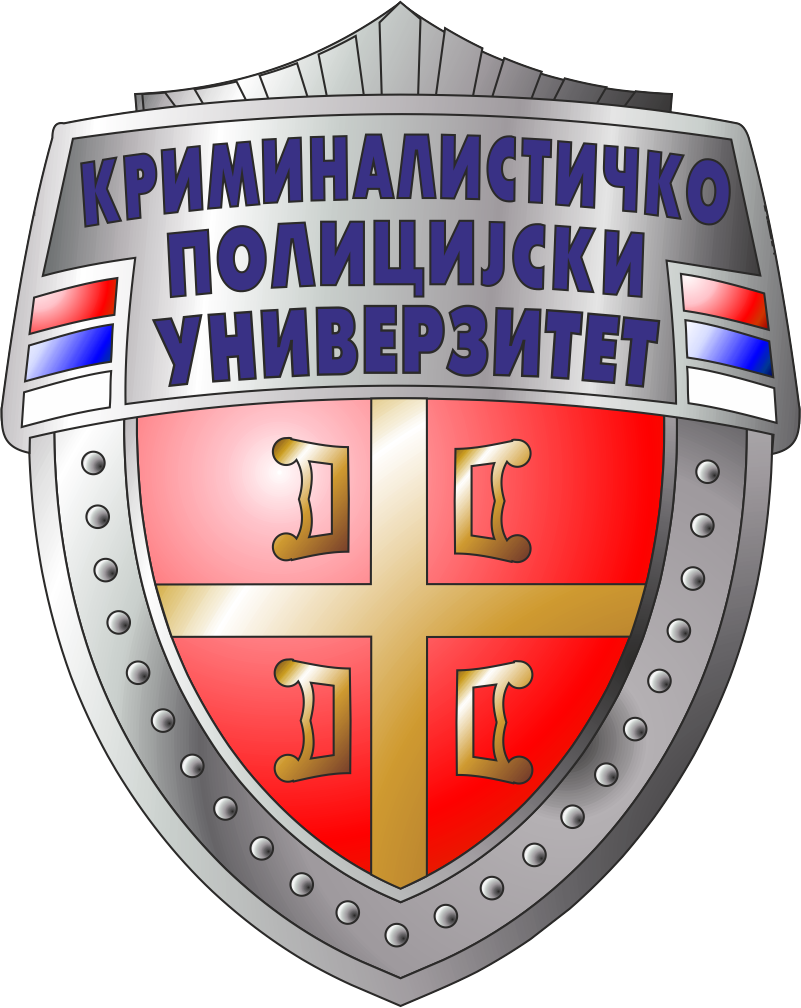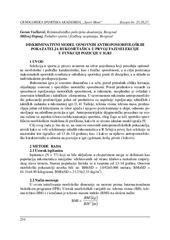Приказ основних података о документу
Diskriminativni model osnovnih antropomorfoloških pokazatelja rukometašica u prvoj fazi selekcije u funkciji pozicije u igri
A disciriminative model of basic anthropomorphological indicators for female handball players in the first phase of selecting position within the team
| dc.creator | Vučković, Goran | |
| dc.creator | Dopsaj, Milivoj | |
| dc.date.accessioned | 2021-03-24T15:07:12Z | |
| dc.date.available | 2021-03-24T15:07:12Z | |
| dc.date.issued | 2011 | |
| dc.identifier.issn | 2337-0351 | |
| dc.identifier.uri | http://www.sportmont.ucg.ac.me/?sekcija=article&artid=1138 | |
| dc.identifier.uri | http://jakov.kpu.edu.rs/handle/123456789/1245 | |
| dc.description.abstract | The purpose of this paper is to establish how young female handball players are selected in the Republic of Serbia on the basis of basic anthropomorphological indicators and what the relation between the anthropomorphological characteristics and the position within the team is. The sample of 57 selected handball players aged up to 14 was divided into 4 sub-samples, with respects to their positions within the team. Their basic anthropomorphological characteristics were measured – body mass (BM), body height (BH) and the respective body mass index (BMI) was calculated for each of them. The obtained results suggest that there were statistically significant differences with respect to the observed variables (BM, BH and BMI) for all the observed positions: F = 6.335; 8.424; 3.676, p = .001; .000; .018, respectively. Three canonical discriminative functions were singled out, the first two being of statistical significance, with the first one explaining 66.0% of the total variance and the second accounting for 31.1%, which means that together they explained 97.3% of the variance. The aforemetnioned implied that there were differences in the height among the selected handball players with respect to their positions on the team, which also applied to their weight, and lastly to the body mass index. The results of our observation showed that the players in the wing position were the shortest and had the lowest body mass, whereas the pivot position players were the tallest, had the highest body mass and the highest BMI, the lowest BMI being characteristic of backcourt players. With respect to the age group (up to 14 years of age) and from the aspect of the function of basic anthropomorphological characteristics (BM, BH, and BMI) it can be generally concluded that the selection of players with respect to the position was performed with the reliablity rate of 52.6% and that it was the most reliable for the position of backcourt players (69.2%), then wings (66.7%), whereas for the pivot position it was only 25.0% and as low as 0% for the position of the goalkeeper. | sr |
| dc.language.iso | sr | sr |
| dc.language.iso | en | sr |
| dc.publisher | Podgorica : Crnogorska sportska akademija | sr |
| dc.rights | openAccess | sr |
| dc.rights.uri | https://creativecommons.org/licenses/by-sa/4.0/ | |
| dc.source | Sport Mont [Elektronski izvor] | sr |
| dc.subject | antropomorfologija | sr |
| dc.subject | rukometašice | sr |
| dc.subject | izbor | sr |
| dc.subject | položaj | sr |
| dc.subject | antropomorphology | sr |
| dc.subject | female handball players | sr |
| dc.subject | selection | sr |
| dc.subject | position | sr |
| dc.title | Diskriminativni model osnovnih antropomorfoloških pokazatelja rukometašica u prvoj fazi selekcije u funkciji pozicije u igri | sr |
| dc.title | A disciriminative model of basic anthropomorphological indicators for female handball players in the first phase of selecting position within the team | sr |
| dc.type | article | sr |
| dc.rights.license | BY-SA | sr |
| dcterms.abstract | Вучковић, Горан; Допсај, Миливој; Дискриминативни модел основних антропоморфолошких показатеља рукометашица у првој фази селекције у функцији позиције у игри; Дискриминативни модел основних антропоморфолошких показатеља рукометашица у првој фази селекције у функцији позиције у игри; | |
| dc.citation.volume | 8 | |
| dc.citation.issue | 25-26-27 | |
| dc.citation.spage | 254 | |
| dc.citation.epage | 259 | |
| dc.identifier.rcub | https://hdl.handle.net/21.15107/rcub_jakov_1245 | |
| dc.identifier.fulltext | http://jakov.kpu.edu.rs/bitstream/id/5560/bitstream_5560.pdf | |
| dc.type.version | publishedVersion | sr |


